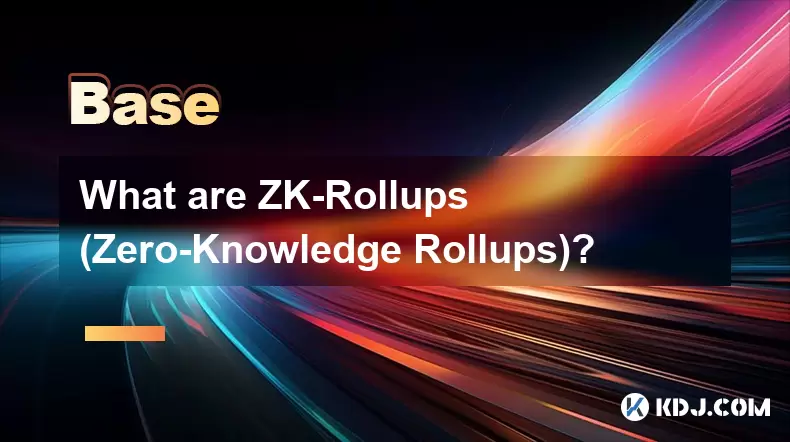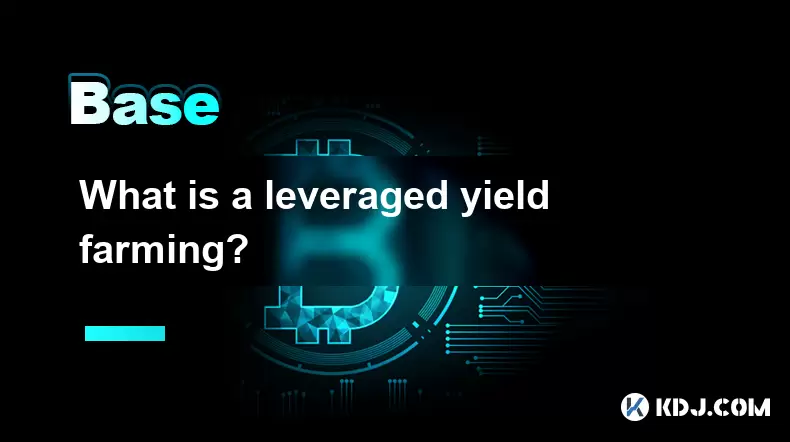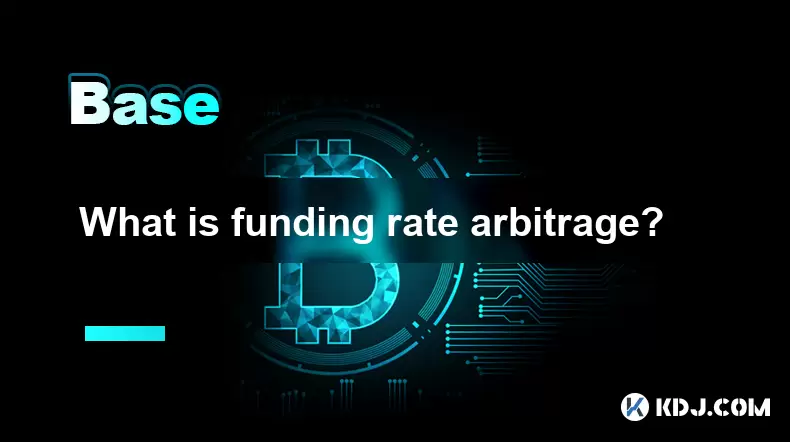-
 Bitcoin
Bitcoin $107,758.1435
-1.45% -
 Ethereum
Ethereum $2,490.6114
-3.32% -
 Tether USDt
Tether USDt $1.0004
0.00% -
 XRP
XRP $2.2042
-2.04% -
 BNB
BNB $651.4818
-1.12% -
 Solana
Solana $145.8782
-3.02% -
 USDC
USDC $0.9999
0.00% -
 TRON
TRON $0.2819
-1.39% -
 Dogecoin
Dogecoin $0.1621
-4.58% -
 Cardano
Cardano $0.5658
-4.18% -
 Hyperliquid
Hyperliquid $37.8181
-6.63% -
 Sui
Sui $2.8404
-4.91% -
 Bitcoin Cash
Bitcoin Cash $481.3703
-2.30% -
 Chainlink
Chainlink $13.0043
-4.79% -
 UNUS SED LEO
UNUS SED LEO $9.0464
0.26% -
 Avalanche
Avalanche $17.6115
-4.39% -
 Stellar
Stellar $0.2359
-2.11% -
 Toncoin
Toncoin $2.7507
-3.93% -
 Shiba Inu
Shiba Inu $0.0...01126
-4.41% -
 Litecoin
Litecoin $86.1256
-3.27% -
 Hedera
Hedera $0.1530
-3.13% -
 Monero
Monero $312.7785
-2.81% -
 Dai
Dai $1.0000
-0.01% -
 Ethena USDe
Ethena USDe $1.0001
-0.02% -
 Polkadot
Polkadot $3.3287
-5.55% -
 Bitget Token
Bitget Token $4.3840
-4.00% -
 Uniswap
Uniswap $6.8370
-10.63% -
 Pepe
Pepe $0.0...09548
-4.25% -
 Aave
Aave $260.2526
-6.11% -
 Pi
Pi $0.4658
-5.45%
What are ZK-Rollups (Zero-Knowledge Rollups)?
ZK-Rollups enhance blockchain scalability by processing transactions off-chain and submitting cryptographic proofs to the main chain for quick verification.
Jul 04, 2025 at 07:15 pm

Understanding the Basics of ZK-Rollups
ZK-Rollups, or Zero-Knowledge Rollups, are a layer-2 scaling solution designed to enhance the throughput and efficiency of blockchain networks. They achieve this by bundling multiple transactions into a single batch and processing them off-chain. The results, along with a zero-knowledge proof, are then submitted to the main chain for verification.
The key innovation behind ZK-Rollups is the use of cryptographic proofs that allow validators on the main chain to confirm the validity of off-chain computations without needing to re-execute the transactions themselves. This significantly reduces computational load on the main network, thereby improving scalability and reducing transaction fees.
Unlike traditional rollups that rely on fraud proofs and challenge periods, ZK-Rollups offer immediate finality once the proof is verified, making them more efficient in terms of both time and resource utilization.
How Do ZK-Rollups Work?
At the core of ZK-Rollups lies zero-knowledge cryptography, specifically zk-SNARKs (Zero-Knowledge Succinct Non-Interactive Argument of Knowledge) or zk-STARKs (Scalable Transparent ARguments of Knowledge). These cryptographic tools enable one party to prove to another that they know a value or statement without revealing the actual data.
Here’s how the process unfolds:
- Transaction Aggregation: Multiple transactions are collected and executed off-chain.
- Proof Generation: A succinct cryptographic proof is generated to verify the correctness of all aggregated transactions.
- On-Chain Verification: The proof, along with the new state root, is submitted to the main chain smart contract.
- State Update: If the proof is valid, the state on the main chain is updated accordingly.
This workflow ensures that only minimal data—primarily the proof and some metadata—is published on the main chain, drastically lowering gas costs and increasing transaction speed.
Key Components of a ZK-Rollup System
To fully grasp how ZK-Rollups function, it's essential to understand their architectural components:
- Operator: The entity responsible for aggregating transactions and generating proofs. Operators can be centralized or decentralized depending on the implementation.
- Smart Contract: A contract deployed on the main chain that verifies the zero-knowledge proofs and maintains the current state of the rollup.
- User Wallets: Interact with the rollup through special interfaces that submit transactions to the operator rather than directly to the main chain.
- Merkle Tree: Used to store account states efficiently and securely, allowing for quick updates and verifications.
Each component plays a crucial role in ensuring the system remains trustless, secure, and scalable.
Advantages of Using ZK-Rollups
One of the most compelling benefits of ZK-Rollups is their ability to scale blockchain networks without compromising security or decentralization. Since all transaction data is eventually posted on the main chain, users retain the same level of security as the underlying Layer 1 protocol.
Another significant advantage is reduced transaction fees. Because computational work is done off-chain, only the proof and minimal data need to be stored on-chain, which lowers gas consumption dramatically.
Additionally, ZK-Rollups offer instant finality. Unlike optimistic rollups that require a waiting period for potential fraud challenges, ZK-Rollups validate transactions immediately upon proof verification, streamlining user experience and fund movement.
Use Cases and Applications of ZK-Rollups
ZK-Rollups have found applications across various domains within the cryptocurrency ecosystem:
- Decentralized Finance (DeFi): Platforms like dYdX and Loopring utilize ZK-Rollups to handle high-frequency trading with low latency and cost.
- Non-Fungible Tokens (NFTs): Marketplaces benefit from faster minting and transfer processes, enhancing user interaction and platform performance.
- Web3 Infrastructure: Projects building scalable identity systems, messaging protocols, or storage solutions integrate ZK-Rollups to ensure seamless operation without bloating the main chain.
These implementations showcase how ZK-Rollups can support complex applications while maintaining the foundational principles of blockchain technology.
Challenges and Limitations of ZK-Rollups
Despite their advantages, ZK-Rollups come with certain technical hurdles:
- Complexity of Proof Generation: Generating zero-knowledge proofs requires significant computational power, which can delay transaction batching and increase hardware demands for operators.
- Limited Smart Contract Support: Early versions of ZK-Rollups struggled with supporting general-purpose smart contracts due to the constraints of zk-SNARKs and zk-STARKs logic.
- Centralization Risks: Some implementations rely on a single operator or trusted setup ceremonies, which can introduce centralization concerns if not properly managed.
Efforts are ongoing to mitigate these issues through innovations such as recursive proofs and permissionless operator models.
Frequently Asked Questions
Q: Are ZK-Rollups compatible with Ethereum?
Yes, ZK-Rollups are primarily built to work with Ethereum but can be adapted for other blockchains that support smart contracts and cryptographic verification.
Q: What is the difference between zk-SNARKs and zk-STARKs in ZK-Rollups?
zk-SNARKs require a trusted setup and are less scalable, while zk-STARKs eliminate the need for a trusted setup and offer better scalability and transparency at the expense of larger proof sizes.
Q: Can anyone become an operator in a ZK-Rollup system?
It depends on the implementation. Some ZK-Rollups allow permissionless participation, while others maintain a curated set of operators for performance or governance reasons.
Q: How does data availability work in ZK-Rollups?
All transaction data must be published on-chain, even though execution happens off-chain. This ensures that full nodes can reconstruct the state if needed, preserving decentralization and security.
Disclaimer:info@kdj.com
The information provided is not trading advice. kdj.com does not assume any responsibility for any investments made based on the information provided in this article. Cryptocurrencies are highly volatile and it is highly recommended that you invest with caution after thorough research!
If you believe that the content used on this website infringes your copyright, please contact us immediately (info@kdj.com) and we will delete it promptly.
- Bitcoin's Pattern Break: Are HODLers the Key to the Next Surge?
- 2025-07-04 18:50:12
- Bitcoin Price, Trump's Bill, and the $150K Dream: A NYC Take
- 2025-07-04 19:50:12
- Ethereum, LILPEPE, and the July Bounce: Will Pepe Steal ETH's Thunder?
- 2025-07-04 19:10:12
- Binance Institutional Loans: Unlocking 4x Leverage and Zero Interest for Whales
- 2025-07-04 19:15:12
- Bitcoin Bull Run: Analysts Eye Peak in Late 2025?
- 2025-07-04 19:20:13
- Pepe Indicators, Bullish Forecast: Can the Meme Coin Rally?
- 2025-07-04 19:25:12
Related knowledge

What is a user-generated content (UGC) NFT platform?
Jul 04,2025 at 01:49pm
Understanding the Concept of a UGC NFT PlatformA user-generated content (UGC) NFT platform is a digital marketplace or ecosystem where users can create, mint, and trade non-fungible tokens (NFTs) that represent ownership of original digital content they produce. Unlike traditional NFT platforms where creators often include professional artists or develo...

What is a token generation event (TGE)?
Jul 04,2025 at 07:14am
Understanding the Basics of a Token Generation Event (TGE)A Token Generation Event (TGE) refers to the process through which a blockchain project creates and distributes its native tokens to investors, participants, or stakeholders. This event is often associated with new cryptocurrency projects launching on platforms like Ethereum, Binance Smart Chain,...

What is a block explorer API?
Jul 04,2025 at 05:07am
Understanding the Role of a Block Explorer APIA block explorer API is a crucial interface that enables developers and users to interact programmatically with blockchain data. Unlike traditional APIs used in web services, a block explorer API specifically provides access to blockchain-related information such as transaction details, wallet balances, bloc...

What is a leveraged yield farming?
Jul 04,2025 at 09:36am
Understanding Leveraged Yield FarmingLeveraged yield farming is a more advanced form of yield farming, which itself is a popular method in the decentralized finance (DeFi) ecosystem to earn returns by providing liquidity to various protocols. In traditional yield farming, users deposit tokens into a DeFi platform and earn rewards in return, often in the...

What is open interest in derivatives?
Jul 03,2025 at 02:49pm
Understanding Open Interest in DerivativesOpen interest is a critical metric used in the cryptocurrency derivatives market, particularly when analyzing futures and options contracts. It represents the total number of outstanding contracts that have not been settled or closed by either party involved. Unlike trading volume, which counts all trades made i...

What is funding rate arbitrage?
Jul 04,2025 at 11:43am
Understanding Funding Rate Arbitrage in the Cryptocurrency MarketFunding rate arbitrage is a trading strategy employed by crypto traders to exploit differences in funding rates across various perpetual futures exchanges. In perpetual contracts, funding rates are periodic payments made between long and short traders depending on whether the price of the ...

What is a user-generated content (UGC) NFT platform?
Jul 04,2025 at 01:49pm
Understanding the Concept of a UGC NFT PlatformA user-generated content (UGC) NFT platform is a digital marketplace or ecosystem where users can create, mint, and trade non-fungible tokens (NFTs) that represent ownership of original digital content they produce. Unlike traditional NFT platforms where creators often include professional artists or develo...

What is a token generation event (TGE)?
Jul 04,2025 at 07:14am
Understanding the Basics of a Token Generation Event (TGE)A Token Generation Event (TGE) refers to the process through which a blockchain project creates and distributes its native tokens to investors, participants, or stakeholders. This event is often associated with new cryptocurrency projects launching on platforms like Ethereum, Binance Smart Chain,...

What is a block explorer API?
Jul 04,2025 at 05:07am
Understanding the Role of a Block Explorer APIA block explorer API is a crucial interface that enables developers and users to interact programmatically with blockchain data. Unlike traditional APIs used in web services, a block explorer API specifically provides access to blockchain-related information such as transaction details, wallet balances, bloc...

What is a leveraged yield farming?
Jul 04,2025 at 09:36am
Understanding Leveraged Yield FarmingLeveraged yield farming is a more advanced form of yield farming, which itself is a popular method in the decentralized finance (DeFi) ecosystem to earn returns by providing liquidity to various protocols. In traditional yield farming, users deposit tokens into a DeFi platform and earn rewards in return, often in the...

What is open interest in derivatives?
Jul 03,2025 at 02:49pm
Understanding Open Interest in DerivativesOpen interest is a critical metric used in the cryptocurrency derivatives market, particularly when analyzing futures and options contracts. It represents the total number of outstanding contracts that have not been settled or closed by either party involved. Unlike trading volume, which counts all trades made i...

What is funding rate arbitrage?
Jul 04,2025 at 11:43am
Understanding Funding Rate Arbitrage in the Cryptocurrency MarketFunding rate arbitrage is a trading strategy employed by crypto traders to exploit differences in funding rates across various perpetual futures exchanges. In perpetual contracts, funding rates are periodic payments made between long and short traders depending on whether the price of the ...
See all articles

























































































